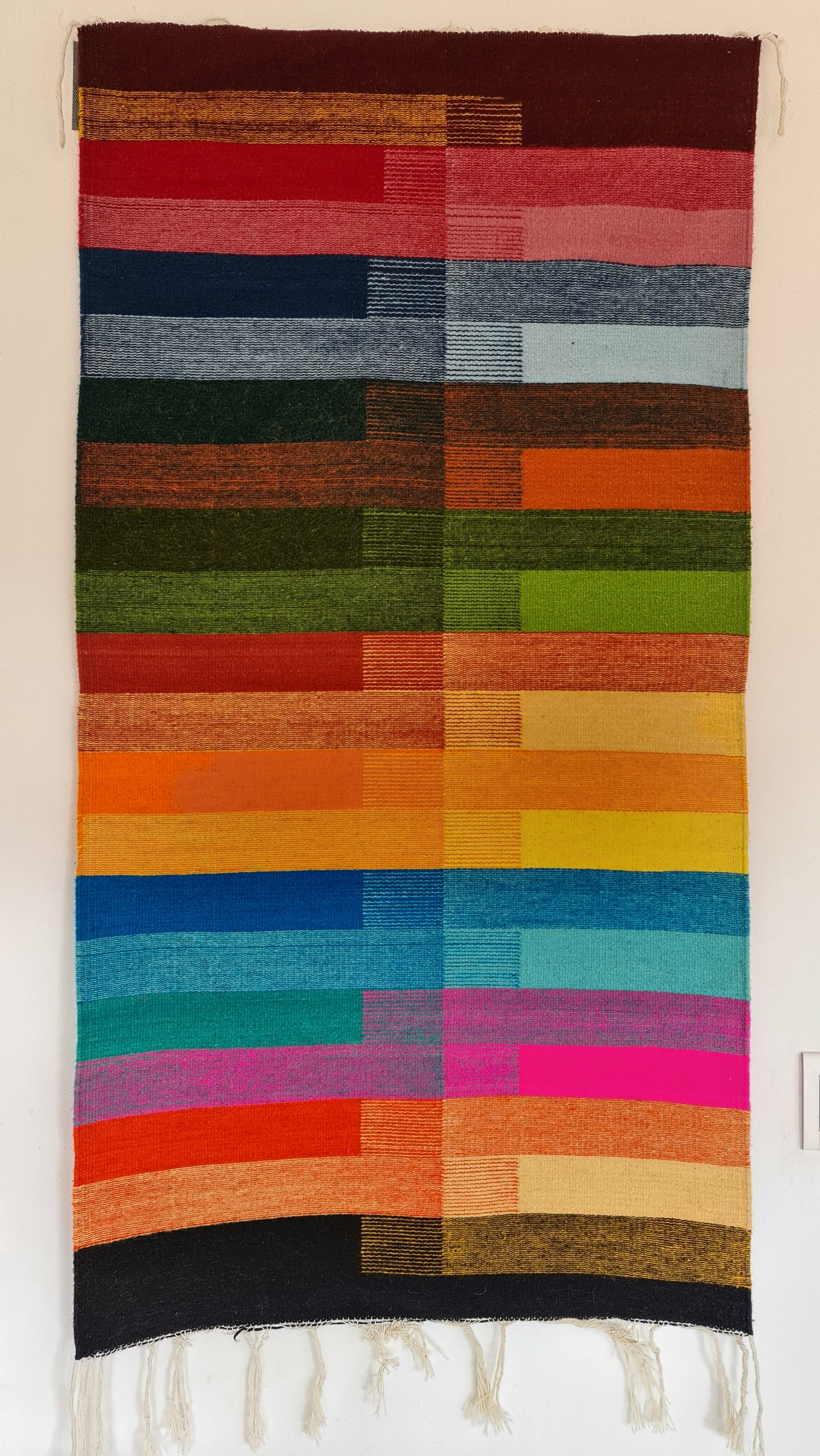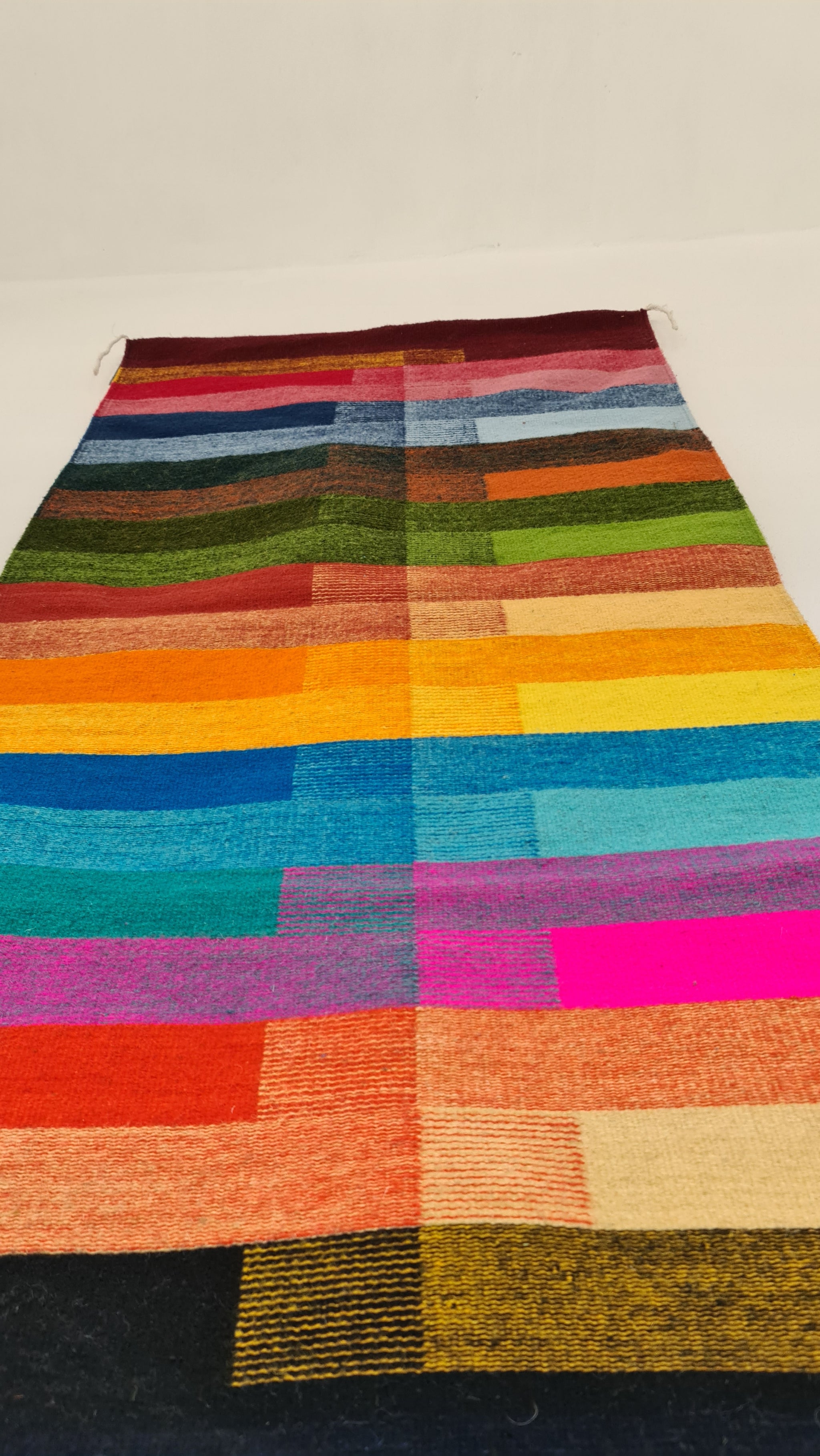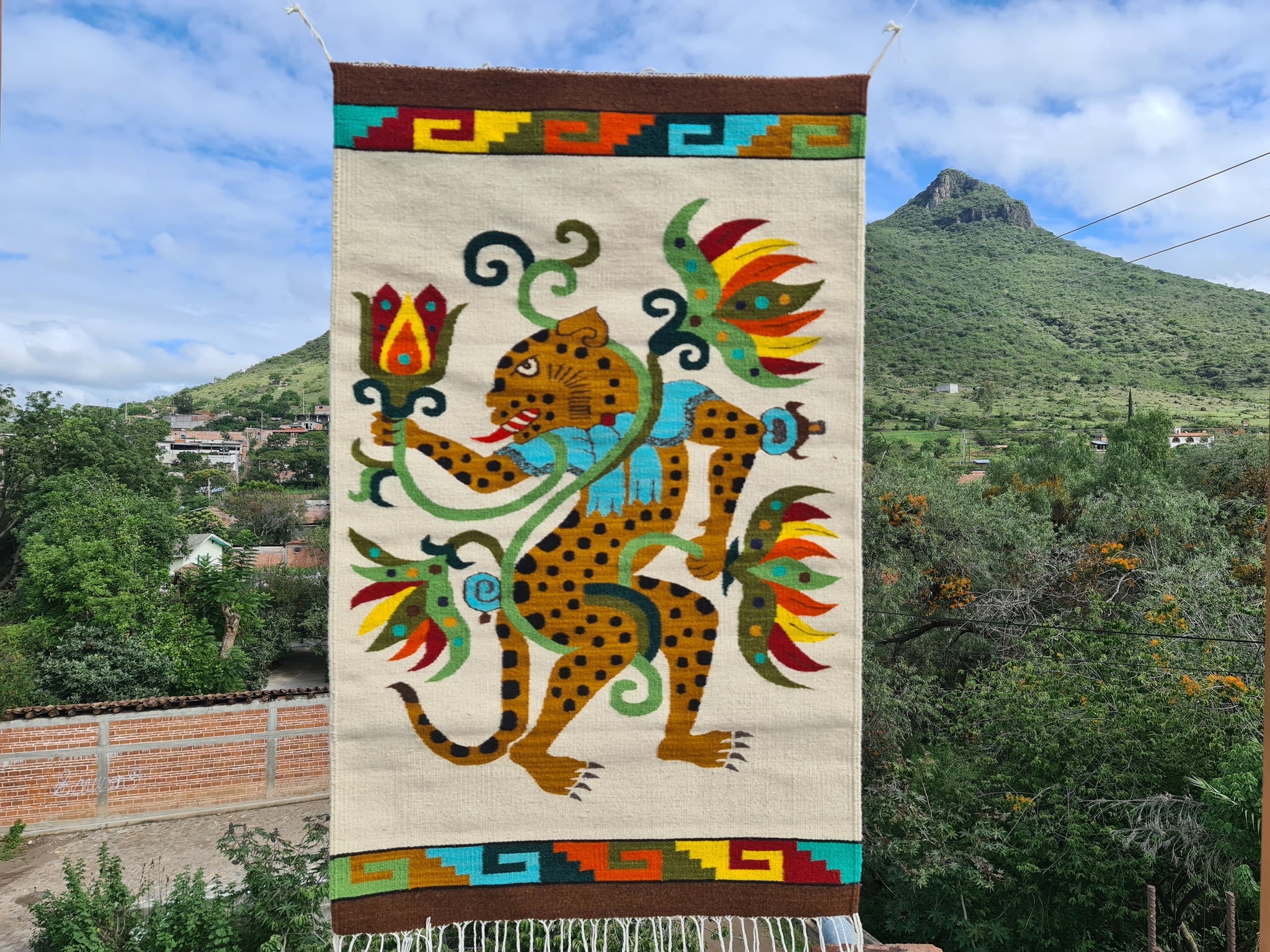Teotzapotlán: sacred zapote land
Sold Out $ 16,000.00
Size: 60x100cm
Master Weaver: María Mendoza Contreras
Price: $900 USD.
Materials and methods: Agave fiber hand dyed with Black Sapote ( Diospyros nigra). Handwoven on a Zapotec style loom of the 16th century adapted from European styles. Woven using a 7 threads per inch reed and a hemp warp.
Desing, patterns and symbols.
My auntie Maria wove this rug in a series of a first batch of rugs when she was experimenting on how to use agave fibers for weaving in the ancient way our ancestors were doing 14,000 years ago when they were making agave woven sandals, slingshots and thumplines woven with agave fiber. My Antie Maria and her shon Justino Martinez are the first weavers in Teotitlan del Valle to have recreated and reingeneered this ancient method of weaving in the XXI century. Agave fiber processing is a diening craft becasue most of the ropes we use these days are made out of plastic; there are a few agave fiber rope makers in Xagaa near mitla where the oldest evidence of corn domestication by humans has been found.
María and Justino took that raw agave and dyed it with Zapote negro, the fruit that gives the name to our culture in the Nahuatl language, the land of the Zapotes. The Sapote fruit is a trie delicacy in our cuisine, it has been described as the chocolate pudding that grows on a tree, in terms of flaovour and texture. This tree grows well along the rivieras of the Zapotec nation and played an important role in the commerce of the Anawak (Ancient Mexico) so that is probably why our people became known as the Zapotec people by the Mexica nation.
The word for Sapote in Zapotec is Bilie'e which can translate as cave, maybe because of its dark fruit color but as much as this fruit is delicious, healthy and a profitable crop to grow. Although we are known as Zapotecs our original ancient name is Benizaa (People from the clouds) or Beni rinií Dixhzaa (people that speak words from the clouds). To our ancestors we refer to as Benigula'as (People of matured hearts).
The symbol in this rug represents the warrior life cycle path, a patters with steps that represents the spiritual growth of humans. Our ancestors understood that death is part of life in that duality of perception and then took the figure of death as something to be respected but not feared. If we are at the top of the food chain then who hunts us? Not the small animals and dangers of nature, but the smallest and most invisible things like viruses, bacteria and as we are finding out an inbalance of nature's fabric. Therefore our ancestors make a spiritual journey that grows inwards, represented by the curling of this stepped spiral. The teachings of Don Juan described in Castaneda's books illustrate how a journey would look to find our true face and true heart. The true ritual war is fighting our own nature as timid, anxious and easily frightened mamals, traits that we did not have time to shed in our evolutionary past as mamals rising to the top of the food chain relatively quickly. Warriors would embrace each momment of life as if every moment could be one last moment on earth becasue they know that death is at an arm's leght behind us; this is like what the buddist achieve when meditating and stilling the body to still the mind, because the mind likes to swing like a pendulum: worrying about the future or regreting the past. Some say that those timid mammal traits (anxiety and worrysome) got us to be where we are now as a technologically advanced species but I would say that these traits are also at the base of our own suffering which we should overcome with warrior spirit and the power of love and wisdom.
This symbol read as a whole in its fractal like repetiotion can be uderstood as rain, the curling also resembles the flowing of water, the ace of elements and fountain of life.
Share:
Related Items
Yeéti: rainbow
$ 7,150.00
Size: 80x150cm Weavers: Francisca Hipólito Variant 1 Belen Bautista, Variant 2 Price: $350USD Materials and methods: criollo sheep wool hand dyed with colorfast aniline dyes using an exhaustive method. Handwoven...
Beaz guie'a: water lily Jaguar
$ 12,000.00
Size: 81x121cm; 32x47.6in Materials and methods: criollo sheep wool hand dyed with colorfast aniline dyes in exhaustive dye vat. This tapestry work was handwoven on a Zapotec walking loom of...
Kayuú gubish kieadain: sunset over the mountains
$ 8,000.00
Size: 60x100cm; 2.x3ftMaster Weaver: Justino Martínez MendozaPrice: 250USD Materials and methods: criollo sheep wool hand dyed with natural dyes: Beè (Dactylopius coccus Costa, cochineal), Zacatlaxcalli (Cuscuta Tinctorea) and Xiuhquilitl (indigofera suffroticosa) and...




















